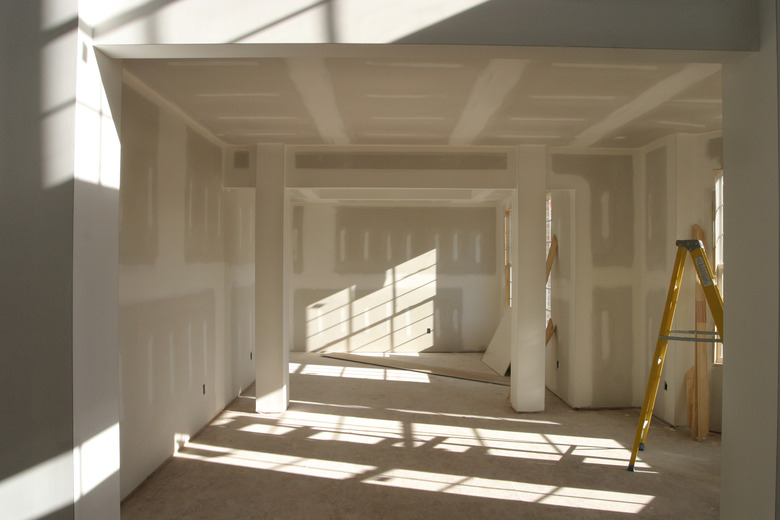Tips On Having Drywall Compound Dry Faster
Finishing out drywall, also known as taping, involves applying multiple coats of wet joint compound over the seams. Each application must dry completely before you apply subsequent coats. Joint compound drying time varies; some types dry more quickly than others do, but they require special care when applying. All-purpose joint compound, frequently used for each application, dries in a couple of hours on a hot day, but in cool, humid weather, it can take days to dry.
Providing Heat Is the Best Way to Dry Drywall Mud
Providing Heat Is the Best Way to Dry Drywall Mud
Turn on the furnace, if possible. If not, put space heaters in the just-taped room to raise the temperature. In the same way a clothes dryer dries a load more quickly on "Hot" than on "Cool," so does warm air speed up the joint compound drying time.
Provide Air Circulation
Provide Air Circulation
Open a window to let in a breeze and to let out the high humidity level in the taped room. As the joint compound dries, the moisture in it gradually evaporates, raising the humidity level in the room. When the air in the room is humid, drying takes longer. In addition to opening a window, put a fan in the room to circulate the air.
Use Thinner Coats
Use Thinner Coats
The first coat of joint compound is the thickest, because you have to use enough mud to fill the joints and cover the screw dimples. This coat takes the longest to dry. Make each subsequent coat, however, very thin. Not only do thin coats dry more quickly, they reduce the risk of indentations and future cracking. As joint compound dries, it shrinks. Multiple thin coats offer a smoother surface.
Drywall Mud Dry Time Varies with Product
Drywall Mud Dry Time Varies with Product
Drywall joint compound comes in several "flavors." Besides the all-purpose variety, which which most painters and handy people are familiar, you can find compounds for taping and topping. Taping compound has enhanced adhesive qualities while topping compound is light and thin for easy finishing. Neither of these dry any faster than all-purpose one, but there one that does. It is setting-type joint compound, which pros call "hot mud."
Hot mud is formulated to set, much like plaster, and it can do so quickly. Some formulations harden in 20 minutes, while other take about an hour. Hot mud takes skill to apply, because you have to work quickly and mistakes are difficult to correct. But if you're in a hurry, it's your go-to product.
Hot mud comes as a powder that you mix with water. When using it, mix only enough to fill your mud pan once. Add water to the powder incrementally and stir constantly to avoid lumps. When you've used up the batch, wash the mud pan and your trowel before mixing more. If you leave even a little bit of residual dried compound in your pan, it can act as a catalyst to set a new batch of compound within minutes and make it unusable.
References
- "Working With Drywall: Hanging & Finishing Drywall the Professional Way"; Bryan Tradem, et al.; 2009
- Ask the Builder; Drywall Finishing Techniques; Tim Carter
